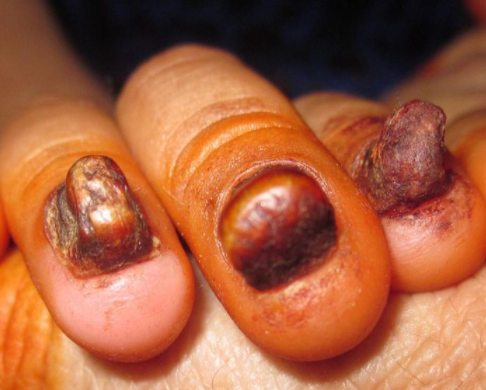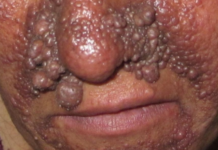Social Rounds Feature from social media! Social Rounds is where we feature interesting and educational cases on social media. Discover new cases and profiles you should follow too!
This case came across the wires on Instagram – Follow @globaldermie who recently posted this most interesting case!
Diagnosis: Pachyonychia congenita
Case description: 7 yo female. Increasing nail dystrophy since birth. Mild focal plantar keratoderma. No family history. Diagnosis: pachyonychia congenita (PC), a group of rare autosomal dominant conditions with characteristic nail dystrophy, in association with painful plantar keratoderma. Traditionally classified into Type 1 and Type 2, according to clinical features, but classification now depends on which keratin gene has the specific mutation: K6a, K16, K17, K6b and K6c. Nearly 100 mutations described by the International PC Research Registry. No family history in many patients, due to sporadic mutations during conception. PC affects skin (especially palms/soles), nails and mucous membranes. Specific features depend on which gene is involved. At birth, fingernail and toenail changes are present in almost 70% and 60%, respectively, but plantar keratoderma is in only 7%. By 5 years of age, more than 75% have toenail and fingernail dystrophy, as well as plantar keratoderma. Ultimately, 98% of patients show toenail dystrophy, and fingernail dystrophy occurs in 76%. Typical nails have marked subungual hyperkeratosis. Periungual infection is reported by most, and nails may be shed. The keratoderma tends to be mainly at pressure points but can be exquisitely painful with a profound impact on quality of life and functioning. The pain in part results from underlying bullae. Hyperhidrosis of the palms/soles may be associated. Additional clinical manifestations include cysts, follicular keratoses, hoarseness, and oral leukoplakia. PC is a clinical diagnosis.
Source: @globaldermie








